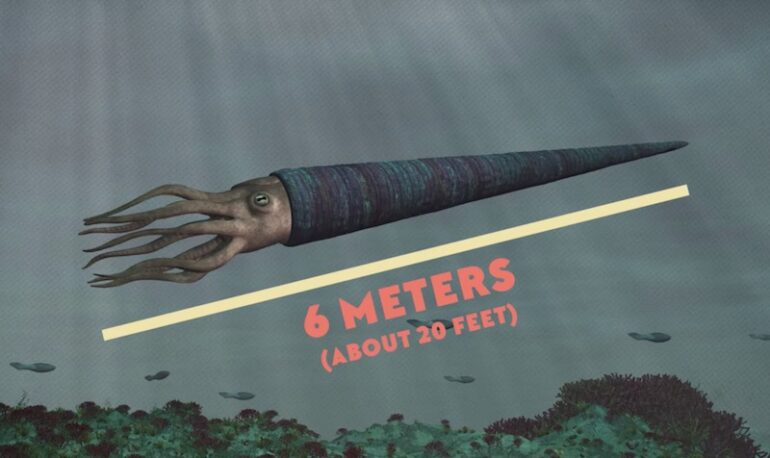For much of the history of life on earth, the oceans were dominated by giant mollusks we call Cephalopods. But the squid, octopus, & cuttlefish of today have less in common with the giant, shelled creatures of ancient past, and only the nautilus even gives us a living example of a cephalopod with an external, coiled shell.
Like lowly gastropods snails, the shells of ancient cephalopods was initially developed for protection. As these creatures became larger it starting becoming advantageous to use the shell for buoyancy to help them swim, making them the largest and most complex life forms at the time – the apex predators of the sea.
But as these giant Cephalopods became larger, their shells became more and more of a drag, literally and figuratively. The shell which had been the crux of their success became a liability when faster swimming jawed fishes starting spreading across the oceans.
This is when the lifestyle of cephalopods took a radically different turn, and slow growing, slow moving and slow reproducing species were replaced by species that became faster in every way. The ammonites were faster, grew faster, and reproduced much faster than their ancestors, creating the template for the short and fast lives of modern cephalopods.
Generations of ancient cephalopods then began shrinking their shells first by coiling it not unlike the Nautilus, and then by shrinking it and enveloping what was left with their tissue, charting the path to the squids, octopus and cuttlefish that we see today. We are truly lucky to live in a time which still holds living examples of prehistoric Nautiloids as well as the deft squid, cuttlefish and octopus.



